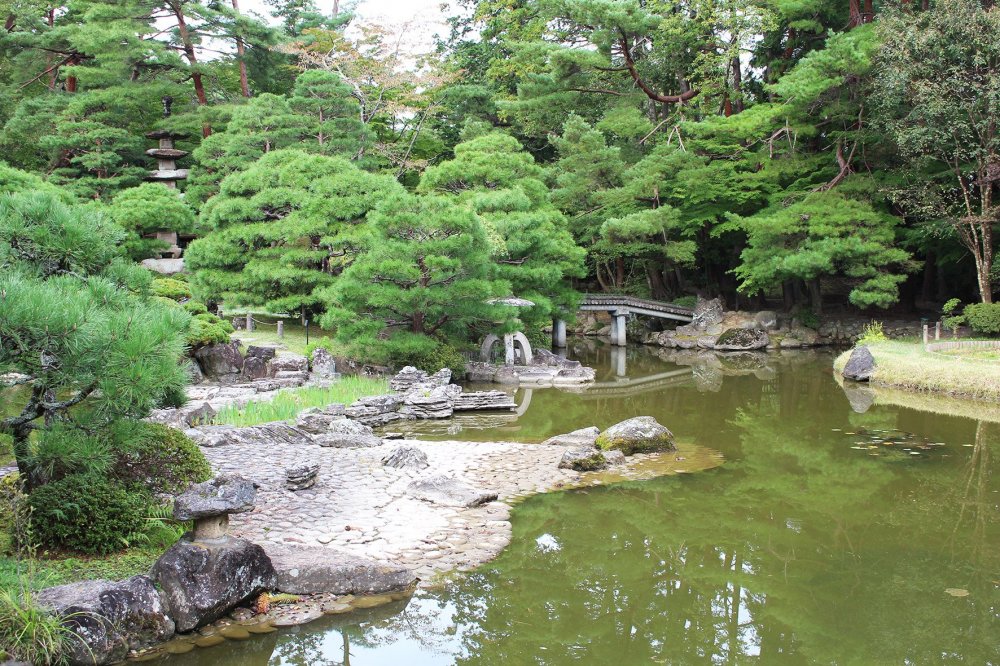To fully enjoy Japanese gardens, one needs to understand their essence with traditions dating back to the 5th century. At that time, the ancient Chinese Taoist faith had a strong influence in Japan with the belief that somewhere in the ocean several islands exist that are the source of immortality.
History and legend
There is a legend about a fisherman named Urashima Taro. Once, Urashima saved the life of a sea turtle, and in gratitude, it took him to one of the islands of immortality. On the island, he married a princess and became immortal. Time passed, and missing his homeland, Urashima decided to return. As soon as he set foot on his native shore, though, he immediately aged and died.
The symbol of the 'island of immortality' became a mandatory element of any garden. It could be a large pond surrounded by trees, in the middle of which there was a stone depicting the island of eternal youth. Even the very concept of 'garden'" was the same as 'island' - 'shima'.
Natural influence
In 794, the capital of Japan was moved to Heian-Kio, later known as Kyoto. The influence of Taoism began to then decline, giving way to Buddhism. Gardens began to depict natural landscapes in miniature, though the pond and islands remained as important elements. Carp and birds began to be considered important elements of garden design.
Deciduous trees were the main ones planted, changing according to the seasons. This reflected the essence of Buddhism - an endless cycle of death and rebirth. The trees were supposed to reflect how fleeting the beauty of nature and life in general is - flowers wilting within a week, falling autumn leaves carried away by the wind, the garden snow melting come the spring...
Zen & stone
The next great influence on garden design was the 'stone garden'. The stone garden became popular during the Muromachi period (1333-1568), when gardeners were called ishitate-so - 'monks who arrange stones'. The father of the Zen garden is the great monk, Muso Soseki. Created from sand and stone, the gardens rejected the principle of the ephemerality of life. In the rock garden, sand with drawn waves or concentric circles became metaphorical images of water with stones representing islands, mountains, trees, bridges, and even animals.
The garden has always been a place for inspiration and writing poems. Muso Soseki wrote about the stone garden:
Without a single grain of sand, the mountains rise; Without dropping a single drop, the flows are gaining strength.
Stone garden philosophy
Zen gardens, where peace and tranquility reigned, were a sacred space for monk and remain so to this day. In Zen Buddhism, reading scriptures and prayers are considered superfluous. To achieve enlightenment, one has to meditate and work physically. The true purpose of creating perfect geometric shapes or drawings in the sand is meditation, or control over your own thoughts.
Creating a garden, Zen monks seem to create a miniature image of the universe. Contemplating the simplicity of the stone garden, one is supposed to abandon worldly vanity and perceive the true essence of nature.
Hashi bridges
In addition to water, stones and plants, there are always several bridges in a garden, hashi in Japanese. They appeared in gardens during the Heian period as a symbol of the transition from one world to another. Coming from China, their red color symbolizes protection from evil forces.
Rinno-ji Temple
One of the many excellent examples of a traditional garden is the Rinno-ji Temple in Sendai. To visit this garden is not just a matter of running along its alleys and bridges to take pictures. The garden is designed to all allow the you stop in the middle of the bustle and think, or just relax your soul, absorbing the power of the miniature universe...
With an entrance fee of JPY300, Rinno-ji Temple Garden is open daily from 8am to 5pm.
Getting there
Rinno-ji Temple is a 20-minute walk from JR Kita-Sendai Station.


























































One of my favorites, a secret garden, is located at Kamihanawa Historical House in Noda City. The design principles are based on the auspicious directions, beautifully expressed.
https://en.japantravel.com/chiba/Kamihanawa-historical-house/40979